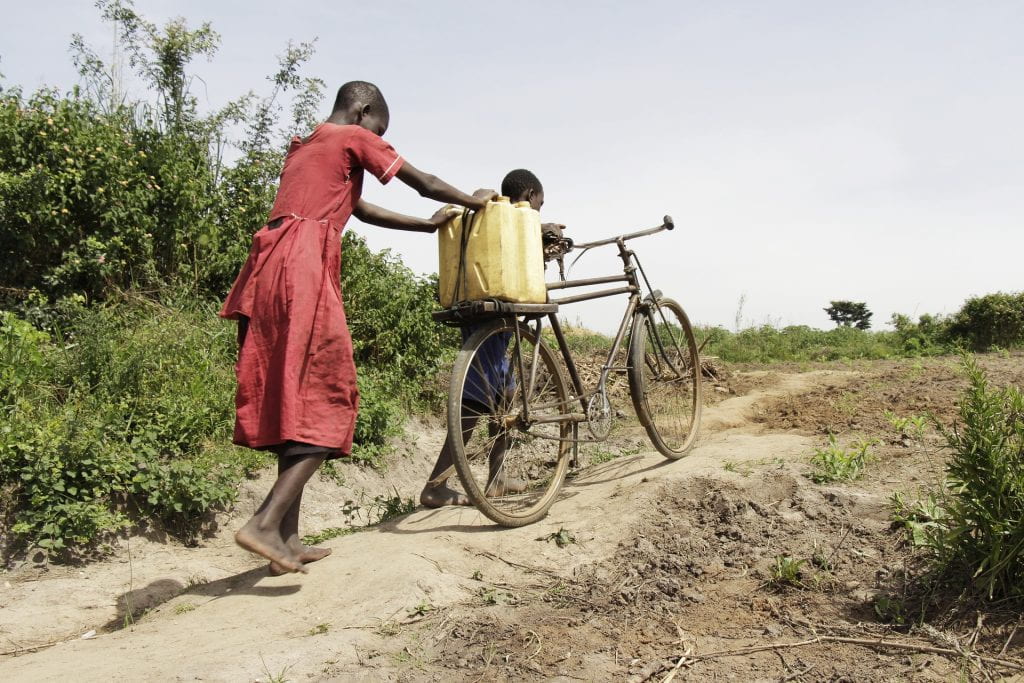20 February 2024
Droughts have the potential to increase the spread of HIV for women living in rural parts of Africa, researchers at the University of Bristol have found.

In the study, published today in AIDS and Behavior, findings imply that drought triggers behavioural changes as people struggle to battle poverty and food insecurity through activities such as transactional sex.
Due to climate change, droughts are likely to become increasingly common in the future, which could lead to higher instances of HIV transmission.
Sub-Saharan Africa will be one of the regions most affected by climate change, with increasing risks of drought caused by changes in precipitation and limited water storage, as well as limited capacity and resources to support adaptation. Drought is an ongoing and worsening trend in sub-Saharan Africa, with the percentage of land experiencing severe drought increasing from around 5% to 15% since 1901.
Lead author Dr Adam Trickey, based at Bristol Medical School, explained:
“Women in rural areas of sub-Saharan Africa who had recently been exposed to drought were more likely to acquire HIV than those who had not been exposed to drought.
“That we found this among women in rural areas, but not women in urban areas or men in either rural or urban areas corroborates previous studies indicating that the mechanism through which drought may increase HIV risk is that drought pushes women who rely on farming for their livelihoods into sex work for money or food.
“Even if these changes were small, the large number of people living with HIV in Africa and the large percentage experiencing drought means that the effect of droughts could still result in many people acquiring HIV in this situation, particularly when you consider that around 65% of Africa’s population relies on subsistence farming.”
The research team combined data from five nationally-representative surveys of over 100,000 adults aged 15-59 that were carried out in 2016 in Eswatini, Lesotho, Tanzania, Uganda, and Zambia. They linked these surveys to precipitation data and calculated whether each household was in an area that experienced less rainfall than usual in 2014-2016 compared with 1981-2016. This was used to define drought areas. They then used statistical models to calculate whether people who had been exposed to a drought were more likely to have recently acquired HIV than those who were not exposed.
Further research is required to investigate the pathways that may link drought and HIV.
This research was funded by the Wellcome Trust.
Paper
‘Investigating the associations between drought, poverty, high-risk sexual behaviours, and HIV incidence in Sub-Saharan Africa: a cross-sectional study‘ by Adam Trickey et al. in AIDS and Behavior [open access]
Further information
About the NIHR
The National Institute for Health Research (NIHR) is the nation’s largest funder of health and care research. The NIHR:
- funds, supports and delivers high quality research that benefits the NHS, public health and social care
- engages and involves patients, carers and the public in order to improve the reach, quality and impact of research
- attracts, trains and supports the best researchers to tackle the complex health and care challenges of the future
- invests in world-class infrastructure and a skilled delivery workforce to translate discoveries into improved treatments and services
- partners with other public funders, charities and industry to maximise the value of research to patients and the economy.
The NIHR was established in 2006 to improve the health and wealth of the nation through research, and is funded by the Department of Health and Social Care. In addition to its national role, the NIHR supports applied health research for the direct and primary benefit of people in low- and middle-income countries, using UK aid from the UK government.